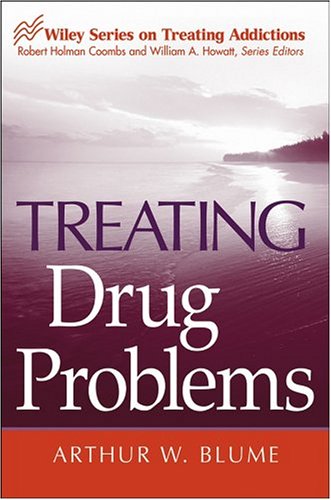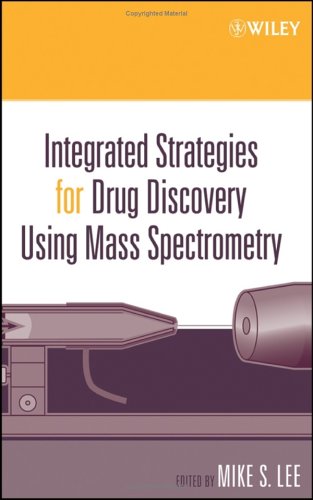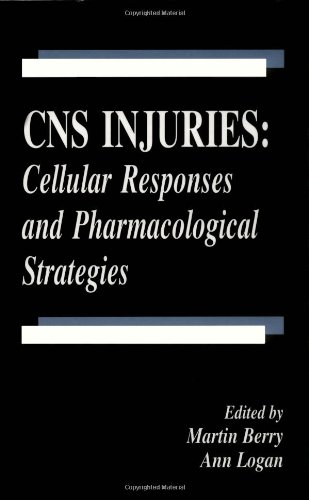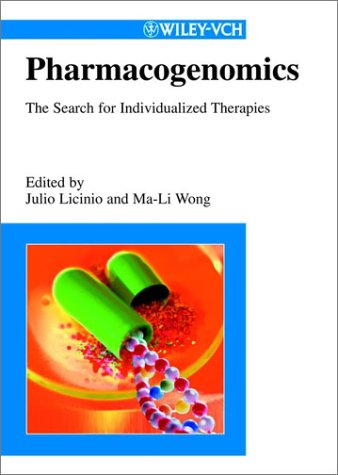Gilbert S. Banker, Christopher Rhodes9780824706746, 0-8247-0674-9
Table of contents :
Modern Pharmaceutics, Fourth Edition, Revised and Expanded……Page 1
Preface……Page 4
Contents……Page 6
I. ROLE OF DRUGS AND DRUG PRODUCTS IN THE TREATMENT AND PREVENTION OF DISEASE……Page 12
Table of Contents……Page 0
II. ROLE OF PHARMACOTHERAY IN MORTALITY RATES, LIFE EXPECTANCY, AND QUALITY OF LIFE……Page 15
A. Reasons for the Drug Product Quality Question……Page 18
C. History and Evolution of Drugs and Drug Products……Page 22
D. Criteria for Drug and Drug Product Quality……Page 25
B. The Concept of the Optimized Drug Product……Page 27
REFERENCES……Page 31
I. INTRODUCTION……Page 33
II. ANATOMICAL AND PHYSIOLOGICAL CONSIDERATIONS OF THE GASTROINTESTINAL TRACT……Page 34
B. Small Intestine……Page 35
C. Large Intestine……Page 37
D. Pathways of Drug Absorption……Page 38
A. Oil/Water Partition Coefficient and Chemical Structure……Page 39
B. pK, and pH……Page 42
C. Mechanisms of Drug Absorption……Page 43
A. Components and Properties of Gastrointestinal Fluids……Page 50
B. Gastic Emptying……Page 52
C. Intestinal Transit……Page 57
D. Blood Flow……Page 60
A. Drug-Food and Drug-Drug Interactions……Page 62
B. Metabolism……Page 65
C. Disease States……Page 68
D. Age……Page 69
REFERENCES……Page 71
I. INTRODUCTION……Page 77
B. Differential Rate Expressions……Page 78
C. Integrated Rate Expressions and Working Equations……Page 79
D. Examples of Calculations……Page 80
III. FIRST-ORDER PHARMACOKINETICS: DRUG ELIMINATION FOLLOWING RAPID INTRAVENOUS INJECTION……Page 82
IV. PHARMACOKINETIC ANALYSIS OF URINE DATA……Page 84
V. CLEARANCE RATE AS AN EXPRESSION OF DRUG-ELIMINATION RATE……Page 85
VI. PHARMACOKINETICS OF DRUG ELIMINATED BY SIMULTANEOUS METABOLISM AND EXCRETION……Page 86
A. Significance of k and km in Patients with Kidney or Liver Disease……Page 88
A. The Method of “Residuals” (“Feathering” the Curve)……Page 89
B. The Wagner-Nelson Method……Page 91
C. The Method of “Inspection”……Page 93
A. Area Under the Plasma Concentration Versus Time Curve……Page 94
B. Cumulative Urinary Excretion……Page 95
IX. MULTIPLE DOSING REGIMENS (REPETITIVE DOSING)……Page 96
A. Repetitive Intravenous Dosing……Page 97
B. Repetitive Extravascular Dosing……Page 99
REFERENCES……Page 101
II. GETTING THE DRUG TO ITS SITE OF ABSORPTION……Page 102
A. Gastric Emptying……Page 103
B. Gastrointestinal Motility……Page 104
III. GETTING THE DRUG INTO SOLUTION: FACTORS AFFECTING THE RATE OF DISSOLUTION……Page 108
A. Effective Surgace Area of the Drug, S……Page 109
B. Saturation Solubility of the Drug, C……Page 114
C. Concentration of the Dissolved Drug in Bulk Solution, C……Page 120
IV. GASTROINTESTINAL MEMBRANE TRANSPORT……Page 121
V. MOVING THE DRUG AWAY FROM THE SITE OF ABSORPTION……Page 122
VI. PHYSICOCHEMICAL VERSUS BIOCHEMICAL FACTORS INFLUENCING DRUG ABSORPTION AND DRUG AVAILABILITY……Page 123
REFERENCES……Page 124
I. THE DOSE-EFFICACY SCHEME……Page 127
A. Drug Input at or Close to the Site of Action……Page 128
B. Drug Input into the Systemic Circulation……Page 130
III. DRUG DISTRIBUTION……Page 137
A. Organ Size, Blood Flow, and Partition Coefficient……Page 138
B. Protein Binding……Page 140
IV. SUMMARY……Page 143
REFERENCES……Page 144
I. INTRODUCTION……Page 146
A. Chemical Degradative Routes……Page 147
B. Physical Degradative Routes……Page 152
A. Kinetic Equations……Page 154
B. Energetics of Reactions……Page 157
IV. THE ARRHENIUS EQUATION AND ACCELERATED STABILITY TESTING……Page 158
A. pH……Page 160
B. Solvent……Page 163
C. Solubility……Page 164
D. Additives……Page 165
E. Light and Humidity……Page 166
A. Resources……Page 167
B. Program……Page 168
C. Regulatory Concerns……Page 169
REFERENCES……Page 170
II. TIMING AND GOALS OF PERFORMULATION……Page 174
A. pK and Solubility……Page 175
E. Surface Characteristics……Page 181
A. Compatibility Test for Solid Dosage Forms……Page 185
B. Kinetic pH Profiles……Page 186
C. Liquid Compatibilities……Page 188
V. DISSOLUTION OF DRUG SUBSTANCE AND DOSAGE FORM……Page 189
C. In Vivo Testing……Page 190
REFERENCES……Page 191
I. INTRODUCTION……Page 193
A. Skin Funtions……Page 194
B. Stratum Corneum……Page 195
C. Viable Epidermis……Page 197
E. Skin’s Circulatory System……Page 198
III. SKIN FUNCTIONS……Page 199
B. Microbial Barrier……Page 200
E. Electrical Barrier……Page 201
IV. RATIONALE FOR TOPICALS……Page 202
B. Surface Effects……Page 203
D. Drug Actions on the Skin’s Glands……Page 206
E. Effects in Deep Tissues……Page 207
V. UNIQUE PHSICOCHEMICAL SYSTEMS USED TOPICALLY……Page 219
B. Ointments……Page 220
D. Creams……Page 221
E. Gels (Jellies)……Page 222
H. General Methods of Preparation of Topical Systems……Page 223
A. Bioavailability……Page 227
B. Aspects of Physical and Chemical Stability……Page 235
C. Freedom from Contamination……Page 237
D. Pharmaceutical Elegance……Page 238
REFERENCES……Page 239
A. Classification……Page 242
B. Pharmaceutical Applications……Page 244
A. Particle Properties……Page 245
B. Surface Properties and Inerfacial Phenomena……Page 247
C. Instabilities and Stabilization Concepts……Page 251
D. Rheological Properties……Page 252
A. Surfactants……Page 256
C. pH-Controlling Agents……Page 257
E. Antioxidants……Page 259
A. Sedimentation and Stokes’ Law……Page 260
B. Flocculation and Deflocculation Phenomena……Page 261
C. Crystal Growth and Polymorphism……Page 262
D. Pharmaceutical Suspensions……Page 263
E. Methods of Evaluating Suspensions……Page 264
A. Types of Emulsions……Page 265
B. Formulation and Preparation Techniques for Emulsions……Page 267
C. Emulsion Stability……Page 271
VI. COLLOIDS AND COLLOIDAL DISPERSIONS……Page 273
B. Nanoparticles……Page 274
A. Parenteral Emulsions……Page 276
A. Particle Size Analysis……Page 278
B. Determination of Electrical Properties……Page 280
C. Rheological Measurements……Page 281
IX. MANUFACTURING AND EQUIPMENT……Page 282
REFERENCES……Page 283
A. General Considerations……Page 291
B. Desirable Properties of Raw Materials……Page 293
C. Tablet Components……Page 297
A. Powder Mixing……Page 310
B. Powder Compaction……Page 313
A. Granulators……Page 315
B. Tablet Presses……Page 316
C. Tablet Machine Instrumentation……Page 318
A. Sugar Coating……Page 322
B. Film Coating……Page 324
D. Coating Equipment……Page 326
A. Official Standards……Page 328
B. Unofficial Tests……Page 330
A. Rapidly Disintegrating Tablets……Page 333
REFERENCES……Page 334
I. HISTORICAL DEVELOPMENT AND ROLE AS A DOSAGE FORM……Page 338
A. Advantages……Page 339
C. The Manufacture of Hard Gelatin Capsules……Page 340
D. The Filling of Hard Gelatin Capsules……Page 347
E. Instrumentation of Capsule-Filling Machines and Their Role in Formulation Development……Page 356
F. Capsule-Filling Machine Simulation……Page 361
G. Design of Hard Gelatin Capsule Formulations for Powder Fill……Page 362
H. Systematic Formulation Development and Analysis of Critical Variables……Page 371
B. Disadvantages……Page 374
D. Formulation of Soft Gelatin Capsules……Page 375
IV. SOFT/LIQUID-FILLED HARD GELATIN CAPSULES……Page 376
REFERENCES……Page 378
I. INTRODUCTION……Page 384
B. The Intramuscular Route……Page 385
C. The Intravenous Route……Page 387
A. Hyperalimentation Solutions……Page 388
A. The Active Drug……Page 389
B. Added Substances (Excipients) in Parenteral Formulations……Page 391
C. Vehicles……Page 395
D. Parenteral Dosage Forms……Page 396
VI. STABILITY……Page 406
A. Sterilization by Steam……Page 407
C. Sterilization by Ethylene Oxide……Page 408
D. Sterilization by Filtration……Page 409
VIII. CLINICAL CONSIDERATIONS IN PARENTERAL PRODUCT DESIGN……Page 410
IX. QUALITY ASSURANCE……Page 411
A. Regulatory and Compendial Requirements……Page 412
B. Monitoring Programs……Page 413
C. Product Testing and Evaluation……Page 414
REFERENCES……Page 416
I. INTRODUCTION……Page 418
II. HISTORICAL BACKGROUND……Page 420
III. ANATOMY OF THE EYE AND ADNEXA……Page 421
IV. PHARMACOLOGY AND THERAPEUTICS OF OPHTHALMIC MEDICATION……Page 423
A. Sterility……Page 425
B. Ocular Toxicity and Irritation……Page 426
C. Preservation and Preservatives……Page 431
B. Biological Barriers and Fundamentals of Passive Transport……Page 435
C. Passive Absorption and Intraocular Delivery……Page 440
D. Active Transport, a Potential Mechanism for Specific Structures……Page 445
E. Delivery to the Vitreous and Posterior Segment……Page 446
VII. MANUFACTURING CONSIDERATIONS……Page 448
A. Manufacturing Environment……Page 450
B. Manufacturing Techniques……Page 452
D. Equipment……Page 453
A. Topical Eyedrops……Page 454
B. Semisolid Dosage Forms: Ophthalmic Ointments and Gels……Page 461
C. Solid Dosage Forms: Ocular Inserts……Page 463
D. Intraocular Dosage Forms……Page 465
B. Composition of Contact Lenses……Page 468
C. Complications of Contact Lens Wear and the Need for Care Products……Page 469
D. Types of Lens Care Products……Page 471
REFERENCES……Page 475
B. Physicochemical Factors Governing Lung Deposition……Page 482
C. Phyiological and Anatomical Features Governing Lung Deposition……Page 484
D. Mechanism of Drug Clearance and Pharmacokinetics of Disposition……Page 486
II. CATEGORIES OF AEROSOL-DELIVERY DEVICE……Page 487
A. Propellant-Driven Metered Dose Inhalers……Page 488
B. Dry Powder Inhalers……Page 489
C. Nebulizers……Page 491
A. Emitted Dose……Page 493
B. Particle Size Characterization……Page 494
BIBLIOGRAPHY……Page 499
REFERENCES……Page 500
II. TERMINOLOGY……Page 503
A. Biological Factors Influencing Oral Sustained-Release Dosage Form Design……Page 505
B. Physiochemical Factors Influencing Oral Sustained-Release Dosage Form Design……Page 506
D. Dissolution-Contrtolled Systems……Page 507
E. Diffusional Systems……Page 509
F. Bioerodible and Combination Diffusion and Dissolution Systems……Page 513
G. Osmotically Controlled Systems……Page 514
H. Ion-Exchange Systems……Page 515
A. Liposomes……Page 516
B. Prodrugs……Page 518
C. Nanoparticles……Page 519
E. Antibody-Targeted Systems……Page 520
VI. OCULAR SYSTEMS……Page 521
VII. TRANSDERMAL SYSTEMS……Page 522
VIII. VAGINAL AND UTERINE SYSTEMS……Page 523
IX. INJECTIONS AND IMPLANTS……Page 524
XI. CONCLUSIONS……Page 525
REFERENCES……Page 526
II. RATIONALE FOR TARGETED DRUG DELIVERY……Page 531
A. Cellular Uptake and Processing……Page 533
B. Transport Across the Epithetial Barrier……Page 536
C. Extravasation……Page 538
D. Lymphatic Uptake……Page 541
IV. PHARMACOKINETIC AND PHARMACODYNAMIC CONSIDERATIONS……Page 542
A. Prodrugs……Page 544
B. Drug-Carrier-Delivery Systems……Page 546
VI. TARGETING IN THE GASTROINTESTINAL TRACT AND TO OTHER MUCOSAL SURFACES……Page 577
VII. MECHANICAL PUMPS……Page 579
REFERENCES……Page 580
A. USP Classifications……Page 588
II. ELASTOMERIC CLOSURES……Page 589
A. Mechanical Properties of Elastomers……Page 590
C. Rubber Control Techniques……Page 591
III. PLASTICS……Page 592
D. Photodegradation……Page 593
A. General Properties……Page 594
A. Composition……Page 595
A. Tamper-Resistant Packaging……Page 596
B. Child-Resistant Packaging……Page 597
VII. ANALYSIS AND CONTROL OF PACKAGING MATERIALS……Page 598
F. Physical Test Methods……Page 599
A. The Blister Package……Page 600
B. Strip Packaging……Page 602
D. Interchangeability of Packaging Materials……Page 603
REFERENCES……Page 605
I. INTRODUCTION……Page 607
III. CLASSIC OPTIMIZATION……Page 608
IV. STATISTICAL DESIGN……Page 609
A. Evolutionary Operations……Page 610
C. The Langrangian Method……Page 611
D. Search Methods……Page 613
E. Canonical Analysis……Page 619
VI. OTHER APPLICATIONS……Page 620
VII. COMPUTERS AND SYSTEMS……Page 621
VIII. CONCLUDING REMARKS……Page 622
REFERENCES……Page 625
A. Historical Perspective: Effect of the 1906 Act on Drug Product Distribution……Page 627
A. Claimed Investigational Exemption for a New Drug……Page 629
B. New Drug Application……Page 632
C. Drug Efficacy Study……Page 635
D. Abbreviated New Drug Application……Page 636
A. Current Good Manufacturing Practices……Page 637
C. The FDA Recall System……Page 641
REFERENCES……Page 642
I. INTRODUCTION……Page 644
C. Legislative Requirements for Data on Development Pharmaceutics……Page 646
A. Notice to Applicants……Page 647
B. The Common Technical Document……Page 648
A. Development Pharmaceutics……Page 649
B. Process Validation……Page 658
B. Tablets, Hard Gelatin Capsules, Soft Gelatin Capsules, and Granules……Page 662
C. Parenteral Products (Injections, Powders for Injection, Concentrates for Injection, Sterile Implants)……Page 663
C. Guidelines……Page 664
A. Classification of Age Groups……Page 666
A. The Effects of Maturational Changes on Drug Disposition……Page 667
C. Drig-Delivery System and Compliance Issues……Page 669
D. Future Directions……Page 673
A. Diminution of Physical Funtion and its Effects on Drug Disposition……Page 674
C. Drug-Delivery Systems and Comliance Issues……Page 679
A. Particle Size……Page 683
D. Compressibility and Flow……Page 684
REFERENCES……Page 685
II. BACKGROUND……Page 693
B. Reduction of Immunogenicity of Therapeutic Proteins……Page 695
III. PROTEIN STRUCTURE……Page 697
A. Covalent Protein Destabilization……Page 699
B. Noncovalent Protein Destabilization……Page 702
A. Liquid Chromatography……Page 704
C. Electrophoresis……Page 705
D. Immunosssays and Biological Activity Assays……Page 706
VI. FORMULATION APPROACHES TO PROTEIN STABILIZATION……Page 707
A. Protein Stabilization in Solution Using Additives……Page 708
C. Lyophilizations and Protein Formulation Development……Page 710
D. Spray-Drying of Protein Pharmaceuticals……Page 713
VII. REGULATORY ASPECTS OF BIOTECHNOLOGY-BASED PHARMACEUTICALS……Page 714
VIII. DEVELOPMENTS IN PROTEIN DRUG DELIVERY……Page 715
REFERENCES……Page 716
A. Veterinary Products – Economic Overview……Page 722
II. ANIMAL DOSAGE FORMS……Page 723
B. Feed Additives……Page 724
C. Drinking Water Medications……Page 725
E. Drenches and Tubing Products……Page 726
F. Topical Dosage Forms……Page 727
III. U.S. REGULATORY REQUIREMENTS FOR ANIMAL DRUGS……Page 728
IV. CONCLUSION……Page 729
REFERENCES……Page 730
C. Categories……Page 731
E. Preparations……Page 732
A. Federal Food, Drug, and Cosmetic Act of 1938 and the Kefauver-Harris Drug Amendment of 1962……Page 733
B. Germany……Page 734
A. Unsafe Dietary Supplements……Page 735
B. Active Ingredients……Page 736
D. Labeling……Page 737
G. Adverse Effects……Page 738
A. Concerns……Page 739
A. Educational Concerns……Page 740
C. Liability……Page 741
E. Guide Lines……Page 742
REFERENCES……Page 743
A. Brief Historical Review……Page 746
B. Development and Generic Bioequivalence……Page 747
A. Cross-Over Studies……Page 748
D. Subject Selections for Bioequivalency Studies……Page 749
B. The U.S. Federal Food and Drug Administration……Page 750
C. State Bodies……Page 751
A. Controlled Release Products……Page 752
B. Chiral Drugs……Page 753
F. Bioequivalency Studies for Drugs with Active Metabolites……Page 754
H. Subject Selection……Page 755
I. Bioequivalency Limits and Critical Care Drugs……Page 756
M. Bioequivalence for Botanicals, Nutritional Supplements, and Nonconventional Products……Page 757
N. Biowaivers……Page 758
REFERENCES……Page 759
A. Data Information Knowledge……Page 762
B. Pharmaceutical and Biomedical Literature……Page 763
C. An Information Imperative: Self-Renewal……Page 764
A. Primary Literature……Page 765
B. Secondary Literature……Page 767
C. Tertiary Literature……Page 769
III. THE SPECTRUM OF DRUG INFORMATION……Page 770
A. Research and Development: Preclinical Drug Information……Page 771
B. Drug Information from Phase I, II, and III Studies, The New Drug Application, and Product Approval/Launch……Page 778
C. Phase IV Studies and Postmarket Drug Information……Page 782
IV. FINDING USEFUL INFORMATION……Page 784
A. Steps in Conducting a Search……Page 785
A. Suggestions for Using the Literature at the Point of Need……Page 788
C. Managing the Information You Retrieve……Page 789
REFERENCES……Page 790
I. OVERVIEW OF MANAGED CARE……Page 794
A. The Managed Care Model……Page 795
B. Types of Managed Care Organizations……Page 797
A. Provider Networks……Page 798
C. Utilization Management……Page 799
III. CURRENT TRENDS AND ISSUES IN MANAGED CARE……Page 804
REFERENCES……Page 805
A. Uneven Progress in the World……Page 807
C. Tripartite Convergence, Globalization, Harmonization, and WHO Concerns……Page 809
A. Genomics……Page 810
D. Combinatorial Chemistry and Rapid Throughput Screening……Page 811
F. Neurosciences……Page 812
J. Bioinformatics……Page 813
A. The U.S. Pharmaceutical Industry: Size, Scope, and General Direction……Page 814
B. The Research/Innovation Agenda and Some of Its Challenges……Page 815
D. Intellectual Property Protection in the Pharmaceutical Industry……Page 816
E. Industry and Academic Cooperation……Page 818
F. Other Trends in the Pharmaceutical Industry……Page 820
IV. COMMUNTIY AND INSTITUTIONAL PHARMACY PRACTICE……Page 821
V. CHANGES IN PHARMACIST DEMOGRAPHICS AND SUPPLY VERSUS DEMAND……Page 823
REFERENCES……Page 824







Reviews
There are no reviews yet.